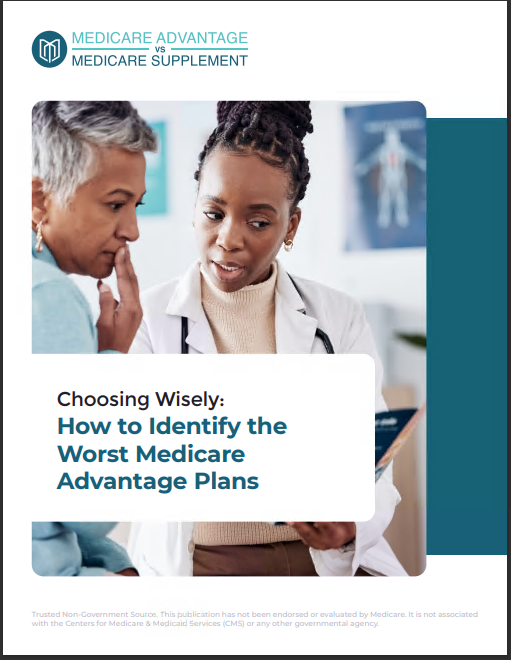Key Takeaways
-
Medicare is a federal health insurance program primarily for individuals aged 65 and older, as well as certain younger individuals with disabilities or specific medical conditions.
-
Understanding how Medicare works in 2025 helps you make informed choices about coverage, costs, and enrollment.
Understanding Medicare: What You Need to Know in 2025
Medicare plays a significant role in American healthcare, offering coverage to millions of people across the country. If you’re turning 65 this year or already enrolled, it’s important to grasp how the program functions in 2025. Let’s break it down so you can confidently navigate your options without confusion.
The Basics: What Is Medicare?
Medicare is a federally funded health insurance program mainly for individuals who are 65 or older. However, it also covers certain younger individuals with disabilities and those diagnosed with End-Stage Renal Disease (ESRD) or Amyotrophic Lateral Sclerosis (ALS). Administered by the Centers for Medicare & Medicaid Services (CMS), Medicare helps cover hospital stays, doctor visits, prescription drugs, and other medical services.
Medicare provides essential health coverage, but it does not cover everything. Many enrollees supplement their coverage with additional insurance or savings to cover out-of-pocket expenses. Understanding how Medicare works can help you plan for current and future healthcare costs.
Breaking Down Medicare Parts
Medicare is divided into several parts, each covering different types of healthcare services:
Medicare Part A: Hospital Insurance
Part A helps cover inpatient hospital stays, skilled nursing facility care, hospice, and some home health services. Most people qualify for premium-free Part A if they have worked and paid Medicare taxes for at least 10 years.
If you need hospital care, Part A covers many of the basic costs, but you may still have out-of-pocket expenses like deductibles and coinsurance. Understanding these potential costs is crucial when planning for medical care.
Medicare Part B: Medical Insurance
Part B covers outpatient medical care, including doctor visits, preventive services, durable medical equipment, and some home healthcare. Unlike Part A, Part B requires a monthly premium, and the cost can vary based on your income.
Preventive services covered under Part B can help catch health problems early. This includes screenings for cancer, diabetes, and cardiovascular conditions, along with vaccinations and wellness visits.
Medicare Part C: Medicare Advantage
Part C, also known as Medicare Advantage, is an alternative to Original Medicare (Parts A and B). These plans are offered by private insurance companies and must provide at least the same coverage as Original Medicare. Many plans also include prescription drug coverage and additional benefits, but costs and coverage options vary.
Medicare Advantage plans often bundle hospital, medical, and drug coverage together, making them a convenient option for many enrollees. However, plan details can change each year, so reviewing your coverage annually is essential.
Medicare Part D: Prescription Drug Coverage
Part D provides prescription drug coverage and is offered through private insurance companies approved by Medicare. Each plan has a list of covered medications (formulary) and comes with its own premiums, copays, and deductibles.
If you take medications regularly, enrolling in a Part D plan can help manage costs. Prescription drug prices vary between plans, so comparing options is important.
How Much Does Medicare Cost in 2025?
While some aspects of Medicare are free, others require out-of-pocket payments. Here’s what you need to know about costs in 2025:
-
Part A Premium: Free for most people; up to $518 per month if you don’t qualify based on work history.
-
Part A Deductible: $1,676 per benefit period.
-
Part B Premium: $185 per month (higher for higher-income individuals).
-
Part B Deductible: $257 annually.
-
Part D Out-of-Pocket Cap: $2,000 annually, eliminating the coverage gap (formerly known as the “donut hole”).
-
Medicare Advantage & Part D Costs: Vary depending on plan selection.
How to Enroll in Medicare
Enrollment in Medicare depends on your situation. Some people are automatically enrolled, while others must sign up manually.
Automatic Enrollment
You’re automatically enrolled in Medicare Parts A and B if:
-
You’re already receiving Social Security or Railroad Retirement Board benefits when you turn 65.
-
You have been receiving disability benefits for 24 months.
Manual Enrollment
You need to sign up yourself if:
-
You’re turning 65 but haven’t started collecting Social Security benefits.
-
You have certain disabilities but haven’t received 24 months of disability benefits.
When to Enroll
There are specific times when you can enroll in Medicare:
-
Initial Enrollment Period (IEP): A 7-month period that starts 3 months before your 65th birthday and ends 3 months after.
-
General Enrollment Period (GEP): Runs from January 1 to March 31 each year for those who missed their IEP.
-
Special Enrollment Period (SEP): Available if you qualify due to specific circumstances, such as losing employer coverage.
Common Medicare Mistakes to Avoid
Understanding Medicare can be complex, and mistakes can be costly. Here are some common pitfalls:
-
Missing Your Enrollment Period: Delaying enrollment in Part B can result in lifelong late penalties.
-
Assuming Medicare Covers Everything: Medicare does not cover dental, vision, or hearing services unless you have additional coverage.
-
Not Reviewing Your Coverage Annually: Medicare plans change each year, and failing to review your options can lead to unexpected costs.
Maximizing Your Medicare Benefits
To get the most out of Medicare in 2025, consider these strategies:
-
Use Preventive Services: Take advantage of screenings and vaccinations.
-
Stay In-Network: If you have Medicare Advantage, using in-network providers can save you money.
-
Look Into Extra Help: If you have a low income, Medicare Savings Programs can help cover costs.
-
Check Your Drug Coverage: Ensure your prescriptions are covered under your plan.
Find the Right Medicare Plan for You
Navigating Medicare on your own can be overwhelming, but you don’t have to do it alone. There are professionals listed on this website who can help you understand your options, compare plans, and ensure you’re making the best choice for your healthcare needs. Get in touch today to make the most of your Medicare coverage in 2025.










